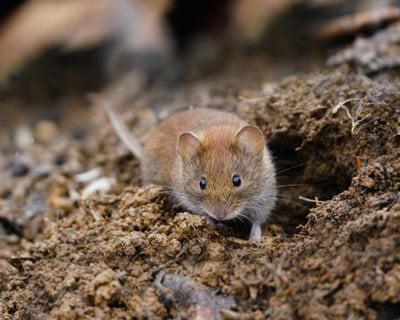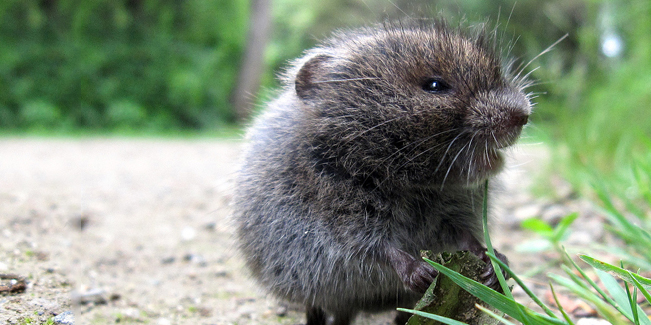Specialist Vole Control Services: Utah's Relied on Option
Wiki Article
Understanding Vole Insect Control: Thorough Insights on Invasion Prevention and Therapy Methods
As homeowner and caretakers, the visibility of voles can present a considerable difficulty to maintaining the honesty of our outdoor rooms. Comprehending the details of vole habits is essential in creating efficient pest control methods. By identifying the refined indicators of vole infestation beforehand, we can take positive actions to stop extensive damage. In this discussion, we will certainly explore the subtleties of vole behavior, explore the recognition of problem indications, and uncover the most reliable prevention and therapy techniques. Keep tuned to discover the understandings that will certainly empower you to master vole pest control and secure your building against these elusive rats.Comprehending Vole Behavior
Taking a look at the foraging patterns of voles uses useful understandings right into their habits and habitat choices. By observing their foraging behavior, researchers can get a much better understanding of where voles choose to establish their environments and the extent of their environmental effect.
Research study suggests that voles show discerning feeding routines, liking tubers, seeds, and origins - vole pest control. This dietary preference influences their foraging patterns, leading them to locations rich in greenery and ground cover. Additionally, voles are recognized to produce elaborate passage systems for foraging and nesting functions, showing a high degree of versatility to their surroundings
Recognizing vole actions is important for applying targeted bug control steps that interrupt their environment preferences and foraging tasks. By researching their actions, experts can develop a lot more reliable avoidance and treatment methods to take care of vole invasions.
Identifying Indicators of Vole Invasion
Vole problems can be discovered by recognizing specific indicators of their existence in a location. One of one of the most typical indications of a vole problem is the existence of surface area paths. Voles develop networks of narrow pathways on the ground that are usually around 2 inches broad. These paths are commonly discovered in grassy locations or below compost or ground cover where voles can move easily and look for food.Another key indicator of vole invasion is the existence of little burrow openings in the ground. Voles dig shallow burrow systems with numerous entryways and exits. These burrows act as sanctuary and nesting websites for the voles. Additionally, voles are known to leave chewed plant stems, origins, and light bulbs near their burrow openings, showing their feeding task in the area.
In addition, vole droppings can also symbolize their visibility (vole control). Vole droppings are small, brown, and cylindrical in form, resembling grains of rice. Discovering these droppings along runways or near burrow openings can verify a vole infestation. By being watchful for these indications, building proprietors can quickly deal with vole infestations and prevent more damages.
Applying Proactive Avoidance Steps
To efficiently reduce the risks related to vole invasions, continue reading this homeowner can proactively implement a variety of preventive actions focused on safeguarding their landscapes and gardens. One essential step is to preserve a well-trimmed lawn and consistently remove high weeds and dense plants, as voles are brought in to more areas supplying adequate cover. Mounting barriers such as hardware towel underground around prone locations like yard beds can likewise aid avoid vole invasion. In addition, maintaining garden areas tidy and minimizing clutter where voles can conceal or nest is vital in minimizing their visibility.In addition, utilizing natural vole deterrents like castor oil-based repellents or predator urine can function as effective safety nets. It is likewise a good idea to consistently evaluate exterior areas for any kind of indications of vole activity, such as runways or burrow openings, to deal with potential invasions immediately. By taking on these aggressive avoidance methods, homeowner can substantially reduce the probability of vole damages and preserve the health and visual appeals of their landscapes.
Reliable Treatment Techniques
Including targeted capturing approaches and using approved rodenticides are vital components of reliable treatment approaches for taking care of vole invasions. Capturing can be an efficient means to reduce vole populaces, particularly when placed strategically in their active paths. Break traps and live catches can both be efficient, with the latter permitting the capture and moving of voles. When utilizing rodenticides, it is crucial to adhere to other safety standards to stop harm to non-target pets and pets. Place rodenticides in safe bait stations to lessen risks to unplanned targets. In addition, environment modification, such as reducing ground cover and removing resources of food, can assist discourage voles from infesting an area. Regular monitoring and upkeep are additionally crucial aspects of successful therapy approaches to guarantee that vole populations are kept under control. By integrating capturing, rodenticides, habitat adjustment, and constant surveillance, reliable vole insect control can be accomplished.
Tracking and Upkeep Tips
Regular surveillance permits for the early detection of vole activity, allowing prompt treatment before infestations get worse. To properly keep an eye on vole populaces, purposefully placed catches can be used in vole runways or near burrow entries.Furthermore, maintaining a clean and neat landscape is important in vole avoidance. Cleaning away particles, such as stacks of wood or thick vegetation, removes prospective vole habitats. Consistently trimming and trimming lawns plants helps lower vole hiding places and reduces their accessibility to food sources.

Verdict
To conclude, grasping vole insect control needs a solid understanding of vole behavior, the ability to recognize indicators of infestation, executing positive avoidance procedures, efficient treatment techniques, and consistent tracking and upkeep. By taking an extensive method to vole control, individuals can efficiently manage and prevent problems, eventually safeguarding their property and bordering setting from damage brought on by these tiny rats.In this discussion, we will certainly explore the nuances of vole habits, delve right into the identification of problem signs, and uncover the most reliable avoidance and therapy approaches.Integrating targeted trapping techniques and using approved rodenticides are essential elements of effective therapy approaches for handling vole problems. To effectively keep track of vole populaces, strategically positioned traps can be made use of in vole paths or near burrow entrances. Evaluating and repairing any damages to these frameworks guarantees that vole control stays reliable in protecting properties from invasions. By integrating these tracking and maintenance techniques into an extensive vole insect control plan, people can effectively take care of vole populations and secure their residential or commercial properties from damages.
Report this wiki page